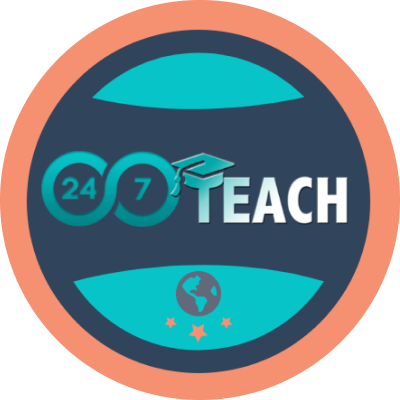Lesson 4: Discover the Wonders of Object-Oriented Programming (OOP) - A Comprehensive Guide
Prefer to listen to this lesson? Click below.
Unveiling the Magic of Object-Oriented Programming (OOP): A Comprehensive Introduction
In the vast ocean of programming paradigms, Object-Oriented Programming (OOP) stands as a stalwart beacon, guiding many software developers in crafting efficient and modular code. If you've ever wondered how your favorite applications manage complexity or maintain a smooth user experience, there's a good chance OOP plays a vital role behind the scenes. In this post, we'll unravel the core concepts of OOP and discover why it's such an indispensable tool in the software engineering toolkit.
What is Object-Oriented Programming (OOP)?
At its heart, OOP is a paradigm that organizes data into "objects" and describes object data types as classes. These objects are like virtual "things" or entities that have specific attributes (known as properties) and can perform activities (referred to as methods).
Imagine a car. Its attributes could include color, make, model, and speed, while its methods might be start, stop, accelerate, and brake.
Four Pillars of OOP:
Encapsulation: This principle deals with bundling data (attributes) and methods that operate on the data into a class unit. It also restricts direct access to some of an object's components, preventing unintended interference and misuse of the data. For instance, in the car example, the internal mechanism (like engine details) is encapsulated, and we can start or stop the car without knowing how it internally functions.
Abstraction: Abstraction hides complex implementation details and shows only the necessary features of an object. This means that when you accelerate the car, you're not concerned with how the fuel ignites to increase speed - you press the pedal. This simplifies complex systems by breaking them into consumable, understandable parts.
Inheritance: A mechanism where a new class can inherit properties and methods from an existing class. Consider brands of cars. A 'Toyota' is a car, but it inherits properties from the broader category 'Car' while also having unique attributes specific to 'Toyota.'
Polymorphism: This allows objects to be treated as instances of their parent class rather than their actual type. The word 'polymorphism' means 'many shapes,' reflecting the many forms an object can take. For our car analogy, consider how you might have different types of vehicles (cars, bikes, buses), but you can drive each one. The 'drive' method would be implemented differently for each vehicle type, but you can still 'drive' them all.
Why Embrace OOP?
Modularity: OOP allows for breaking down complex systems into modular, reusable components (or objects). This makes it easier to read, maintain, and scale the codebase.
DRY (Don't Repeat Yourself): Due to inheritance, you don't need to write the same code again and again. Once a method or property is defined in a parent class, child classes can inherit them without redundancy.
Flexibility and Efficiency: With polymorphism, developers can dynamically assign behaviors and values to objects, making efficient code adaptable to change.
Challenges and Criticisms:
No approach is without its challenges. Critics argue that OOP can lead to:
Overhead due to the abstraction layers.
Complexity when multiple inheritance (an object inheriting from more than one class) comes into play in some languages.
Difficulty in pinpointing and troubleshooting issues in larger object hierarchies.
However, when employed judiciously and understood deeply, OOP remains one of the most potent tools in the software engineering domain.
Deepening the Dive into Object-Oriented Programming (OOP)
As we journey further into OOP, it's paramount to understand its nuances. Delving deeper, we find that the paradigms of OOP aren't just rigid rules but flexible guidelines that can be bent, shaped, and molded to fit specific requirements.
Real-world Analogies to Understand OOP
The beauty of OOP lies in its analogy to the real world. Let's take the example of a music school:
Class: Think of it as a blueprint. Just as a blueprint for a musical instrument, like a guitar, contains the design but isn't the instrument itself. Similarly, a class in OOP defines attributes and behaviors but isn't the object itself.
Object: This is an instance of the class. Following our analogy, any specific guitar produced using the blueprint is an object.
Methods: These are the functionalities. For a guitar, methods can be 'play,' 'tune,' or 'replaceString'.
Attributes/Properties: Attributes for a guitar class could be 'typeOfWood,' 'brand,' 'numberOfStrings,' etc.
Composition vs. Inheritance
While inheritance is a powerful tool, it's not always the answer. Sometimes, it's more appropriate for an object to be composed of several other objects rather than inheriting traits. Consider a 'Band' class. A band isn't a type of guitar or drummer, but it comprises them. This is where composition shines, letting you create complex objects from simpler ones without a strict parent-child relationship.
Interfaces and Abstraction
Interfaces play a crucial role in OOP, especially in languages like Java. They're like contracts, ensuring that a class adheres to a particular set of methods. Using our music school analogy, think of an interface as a mandatory class every student must take, like 'MusicTheory101'. Regardless of their major instrument, every student needs to understand these basics.
Benefits of Deep OOP Understanding
Problem Decomposition: OOP lets you break problems down into smaller, more manageable components, reflecting how we often tackle challenges in the real world.
Code Reusability: It's akin to a musician mastering scales. Once you've learned a scale, you can reuse that knowledge across countless songs.
Maintainability: OOP structures, when well-designed, are like a well-organized orchestra. Each component knows its role, making managing, updating, and debugging easier.
Final Thoughts:
Object-Oriented Programming, like any methodology, isn't a silver bullet. It's a tool—one of many in the software development realm. The developer's power lies in understanding when and how to employ its principles.
For those just embarking on their software engineering journey, mastering OOP's foundational concepts will undoubtedly pave the way for smoother development experiences. As with all programming concepts, the true grasp comes with practical implementation. So, don't just read—code, experiment, break things, and fix them. That's the essence of the learning journey in the world of software engineering.
It's time to test our understanding and engage in insightful discussions.
Lesson Questions: Please answer each question in your own words.
Project: Designing 24/7 Teach's E-commerce System
Tasks:
Dive into the digital world of e-commerce by designing an e-commerce system for 24/7 Teach's online store. Your main building blocks will be classes such as 'Product,' 'User,' 'Cart,' and 'Order.' Here's what you should focus on:
Class Structures: For each of the core classes ('Product', 'User', 'Cart', and 'Order'), detail the attributes and methods that are essential. For instance:
'Product' might have attributes like 'productID', 'productName', 'price', and methods like 'displayProductDetails()', 'applyDiscount()', etc.
'User' could have attributes like 'userID', 'username', 'email', and methods such as 'register()', 'login()', 'updateProfile()', etc.
Relationship Dynamics: Illustrate how these classes interact with one another. For instance, how does a 'User' interact with their 'Cart'? How does an 'Order' relate to the 'Product' items it contains?
Deep Dive into OOP: Using 24/7 Teach's platform as a reference:
Implement inheritance. Perhaps 24/7 Teach offers a 'PremiumUser' category with added benefits? This could inherit attributes and methods from the general 'User' class but might have additional perks or features.
Display composition. A 'Cart' within the 24/7 Teach store will contain multiple 'Product' items. Demonstrate how this composition operates.
Steps to Get Started:
Presentation: Showcase your design blueprint for 24/7 Teach's e-commerce system. Use Draw.io and Google slides to complete your presentation.
Create class diagrams for the classes, use arrows to represent relationships (like inheritance or associations), and flowcharts for the operations.
Textual Layout example to create a visual representation
1. Classes and Their Attributes:
User:
Attributes: UserID, Username, Password, Email, ShippingAddress, BillingAddress
Methods: Register(), Login(), UpdateProfile()
PremiumUser (Inherits from User):
Attributes: MembershipDate, PremiumBenefits
Methods: UpgradeToPremium(), AccessPremiumContent()
Product:
Attributes: ProductID, ProductName, Description, Price, StockQuantity, ImageURL, CategoryID
Methods: ViewProduct(), UpdateStock()
Cart:
Attributes: CartID, UserID (link to user), TotalPrice
Methods: AddToCart(), RemoveFromCart(), CalculateTotal()
Order:
Attributes: OrderID, UserID, CartID, OrderDate, ShippingDate, DeliveryStatus
Methods: PlaceOrder(), TrackOrder()
2. Relationships:
User and PremiumUser: Inheritance relationship where PremiumUser is a specialized version of User.
User and Cart: One-to-One relationship. A user has one cart to which they add products.
Cart and Product: Many-to-Many relationship. A cart can have multiple products and a product can be in multiple carts.
User and Order: One-to-Many relationship. One user can place multiple orders over time.
Order and Cart: One-to-One relationship. An order references a cart and its products for processing.
3. Real-world Operations:
You can represent these operations visually using flowcharts:
User Registration:
Start -> Input UserDetails -> Save to User class -> Confirmation -> End
Product Browsing:
Start -> Search or Filter -> Display Products from Product class -> End
Order Placement:
Start -> Browse Products -> Add to Cart -> Checkout -> Save to Order class -> Payment Confirmation -> End
Remember, as you conceptualize this, always be mindful of real-world operations on 24/7 Teach's website. Consider scenarios such as a user browsing products, adding/removing items from their cart, availing discounts, or checking out to place an order. Your design should offer solutions that ensure a smooth, user-friendly shopping experience on the 24/7 Teach website.
Submission:
Once your project is complete, share a link to your presentation for your mentor and peer review.
Evaluation Criteria:
1. Class Design and Structure (40%):
2. Implementation of OOP Principles (30%):
3. Relationships and Associations (15%):
4. Real-world Applicability (10%):
5. Presentation & Documentation (5%):
Reflection:
After completing the project, take a moment to reflect on what you've learned. What did you find challenging? What topics intrigue you the most? The world of web development is vast, and this is just the beginning!
Participate in the Group Discussion:
Please answer the discussion question in the comment section below.
How have the principles of Object-Oriented Programming (OOP) evolved with the advent of newer programming paradigms, and what are some modern real-world applications where OOP concepts are merged with these paradigms to achieve more scalable and efficient systems?





